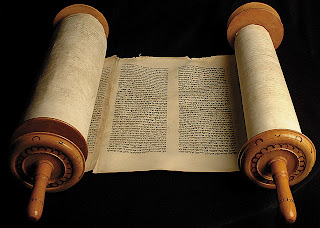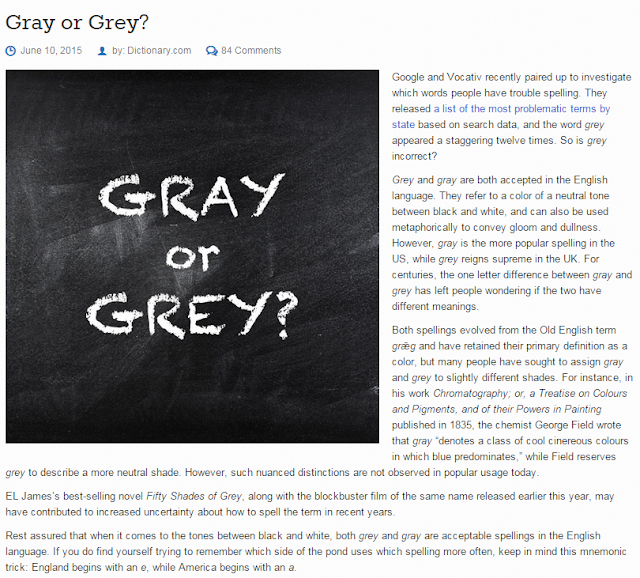最新NPR! 死海古卷Google重現
下載聲音檔請點我
From NPR
Dead Sea Scrolls Come Alive On Google
死海古卷Google重現
AUDIE CORNISH, host: For 2,000 years, the Dead Sea scrolls死海古卷 were seen by no one. Today, they can be viewed by anyone with access to the Internet.在網路上就能看見 Google and the Israel Museum in Jerusalem位於耶路撒冷的以色列博物館 teamed up(這句話是說google與以色列博物館兩方通力合作) to put high-quality images高品質與高解析度的圖像 of the scrolls online. Images of the relics遺物 - the oldest known copies of biblical text 歷史最悠久的聖經古卷- went live on the Web last week. Jon Stokes writes about technology for Wired.com. He is also a scholar of biblical history. And he joins us from KALW in San Francisco. Jon Stokes, welcome to the program.
JON STOKES: Thank you. It's good to be here.
CORNISH: Now, the scrolls may be new to the Web, but they were discovered in 1947, and historical scholars歷史學家 have had access to copies and translations for decades. I mean, what's the big deal 到底有什麼大不了的about having them online now?
STOKES: So, there's a long and kind of sordid卑鄙的/汙穢的 and really interesting publication history behind the scrolls. Because if you're a scholar, you dig something up out of the ground that's brand new or you're assigned to work on something that hasn't been discovered, you might take, you know, a decade to publish this, to really get it in shape把挖出來的古物整理到可以搬出檯面 to publish it because this is your career. I mean, this is going to be your piece of immortality足以讓你不朽或是名留青史的. You're going to be the guy that did the first critical edition of the Dead Sea Scrolls, you know, Isaiah Scroll以賽亞書卷(全名為The Great Isaiah Scroll) or what have you. And so there was fierce scholarly competition學術圈內的激烈競爭 and the work just dragged on and on and on一直拖延 and scholars got really frustrated at the delays; the wider scholarly community更廣大的學術團體, because they said, hey, you know, this is a once in a generation kind of find一代只會有一次的罕見機會 and it's been, you know, 20 years and we haven't had access to this, especially not in the way that we want. So, when I was in grad school, there would be a special day in the semester and everybody would get excited because we would get to go and have an in-person look親自/親眼目睹at some of the manuscripts手稿 that were in the University of Chicago's collection, or in Harvard's collection. And, you know, the students would sit and these things would be laid out for us and we wouldn't be able to touch them and you could look at them with a magnifying glass放大鏡. But that was, like, you know, once or twice in my life that happens. Most scholars are lucky if you're able to just get your hands on a 親自接觸到really good high-quality color copy of a text that you're working on. So, now this thing has been put online and anyone, you know, my daughter, you know, God forbid, decides to follow in my footsteps追隨我的腳步 and try to become a humanity scholar人文科學學者 or a historian, she'll have grown up in a world where she can get really, really close to these manuscripts in a way that almost nobody could.
CORNISH: How close will you be able to get. I'm trying to imagine - what will the scrolls look like online? Will you be able to zoom in使景物放大 on the material the way you can like Google Earth or?
STOKES: Yeah, that's correct. So, these were photographed at a 1,200 megapixel resolution百萬畫素解析度. You know, so if you think about an eight megapixel camera八百萬畫素相機. I mean, this is, you know, 10-Xed out or better超過千萬畫素的解析質感. And you can scroll up 捲起來and see the fibers纖維, you know, and the particles顆粒 in the manuscript.
CORNISH: Jon, you're a biblical scholar, so I have you ask: have you gone online and looked at the Dead Sea Scrolls and are you excited about the possibilities of what it means for your own work?
STOKES: Absolutely, absolutely. These are searchable. You know, I can actually search these, you know, by English translation. You know, I can go to a specific verse詩/韻文 or a specific phrase句子/詞組 and I can zoom in and I can attach comments鍵入評論 to it. But, yeah, I mean, it's definitely the kind of tool that scholars need.
CORNISH: So, it's not the same as actually getting to touch it but it's the closest any of us are going to get.
STOKES: It's almost better. I mean, I've seen these things in person. And, you know, you look at them with a magnifying glass and it's almost better to be able to do the kind of really, really high-level zoom in and that's going to be incredible.
CORNISH: Jon Stokes is a technology writer and biblical scholar. He joins us from KALW in San Francisco. Jon Stokes, thank you so much for joining us.
STOKES: Thank you.











留言
張貼留言